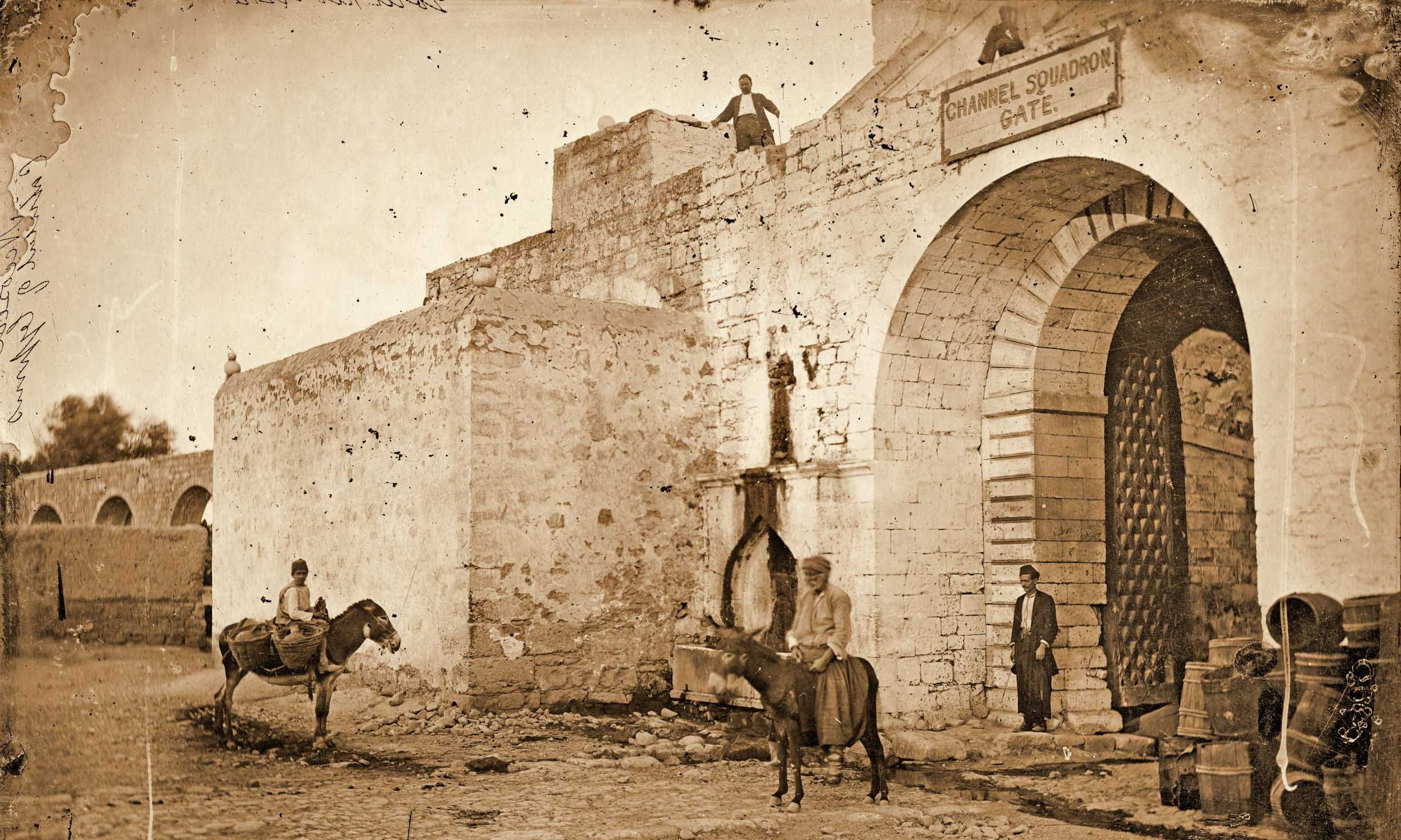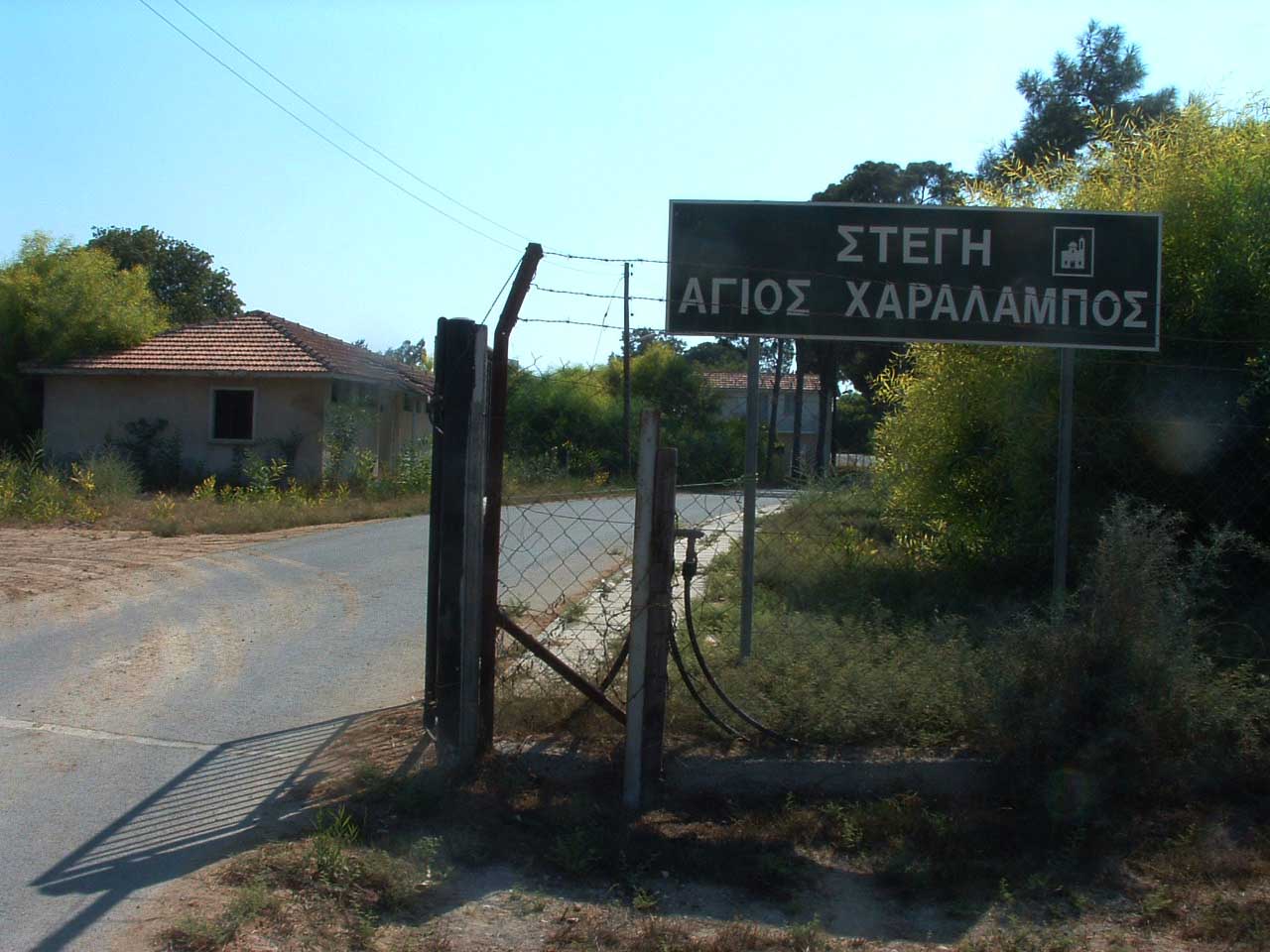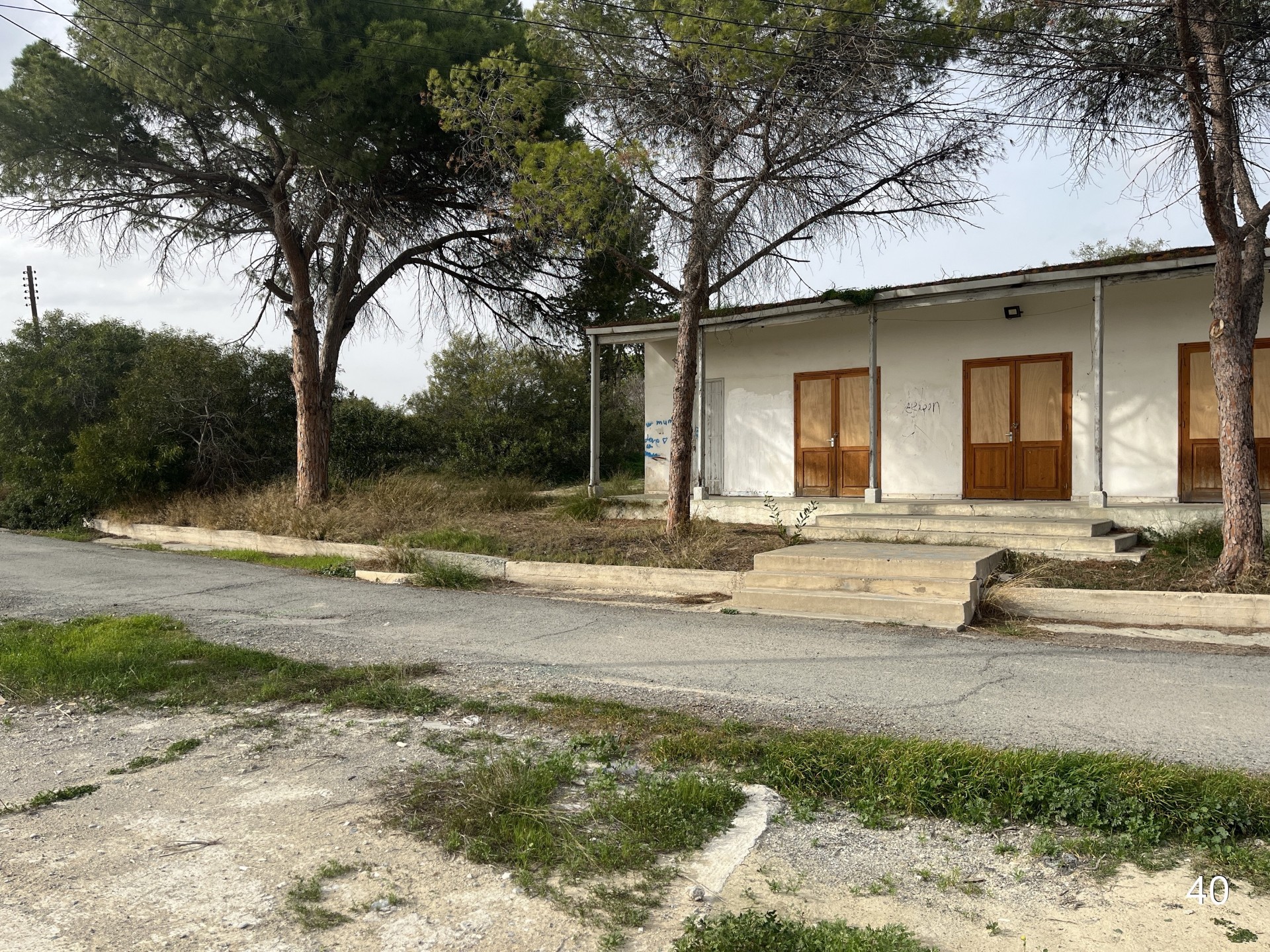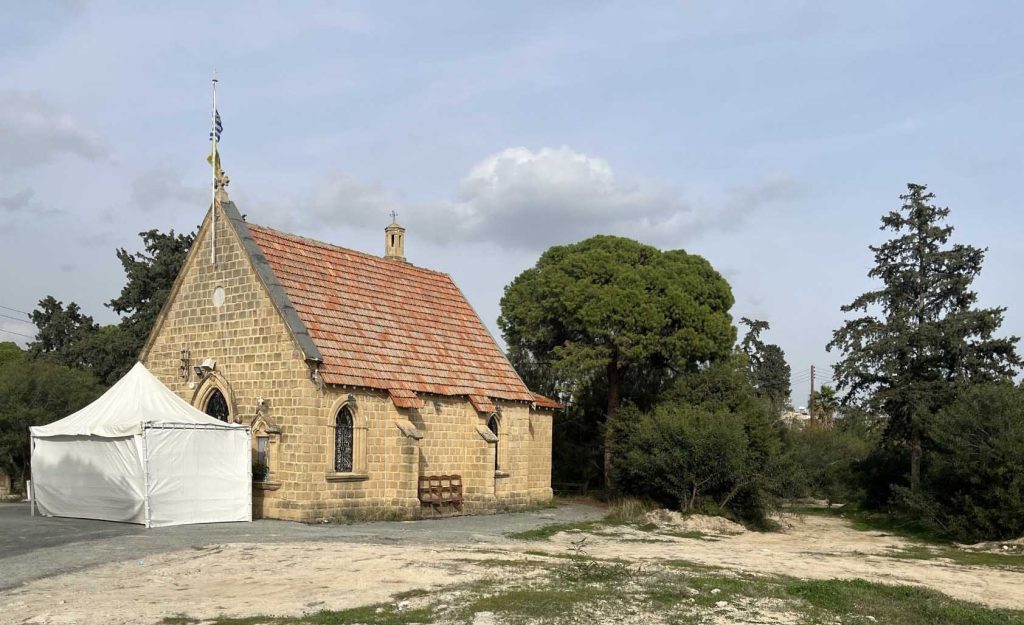Tenders have been announced for a new environment centre in Larnaca on the site lepers once called home
In 2020, the last leper living in the Saint Charalambos colony in Larnaca died. She was 85 and had been there since the age of 14. Abandoned and neglected, the site fell into decay. Perhaps it was a fitting end to a sad, traumatic disease that once plagued Cyprus.
But this year a more optimistic future awaits the former leper colony. Tenders have been announced for a new environmental awareness centre at the place lepers called home, the only life most of them had known after contracting the disease.
The colony is situated behind Larnaca’s salt lakes and is accessible via a narrow road off Faneromeni Avenue.
A previous effort to create an environmental centre in an area closer to the salt lakes came to a halt due to the 2013 financial crisis, which blocked funds from being approved.
Since 2020, the colony has been used as an illegal rubbish dump.
“We clear the area every other day and the sight you encounter indicates how behind we are as humans with regards conscientiousness. We find construction debris, furniture, electrical appliances, household waste, mattresses and even television screens,” municipal engineer Toula Angelidou told the Cyprus Mail.
She explained that the former leper colony is out of sight making it an easy place to dump rubbish illegally.
The environmental centre will put an end to this. The area will be cleaned up, landscaped and serve as a point of reference, providing information, hosting educational and training events and linking the former colony to the salt lakes by a nature path ideal for walks.
The area which includes the salt lakes and the forested area of the colony fall within a Natura 2000 protected zone.
The €2.6 million project is being promoted after pressure exerted by the Larnaca municipality on the environment department, which has since obtained EU funding for the project.
“There is an administrative plan – updated about ten years ago – to manage the salt lake complex,” Angelidou said.
Currently, an architectural competition is running. “A new study will be carried out to take into account the particularities of the area. An environmental impact study has been conducted as per the law for issues of fauna and flora, because it’s a Natura 2000 area,” she added.
The whole project will cover an area of 41,227 square metres. The building itself will be approximately 695 square metres, while the rest will include the landscaping of the surrounding area and a carpark.
According to the plan, the colony’s old living and administrative buildings will have to be demolished as they are unsuitable.
But crucially the church dedicated to Saint Charalambos will remain.
“It is an ancient monument. It was built at the old leper farm in Nicosia and was taken down, each stone was numbered and taken to Larnaca, where it was rebuilt exactly as it stood in Nicosia,” Angelidou said.
Thus, the chapter of leprosy in Cyprus comes to a close, with the little church remaining as a testament to centuries of stigma, banishment and all too often neglect.
Lepers were originally persecuted and banished in the 1800s.
According to some historians, Cyprus was free of leprosy until the 17th century. Some experts believe that it was Christian pilgrims from Palestine who first brought the disease to the island in the late 1600s and that the Monastery of Panayia Trooditissa near Platres was most likely the place where the disease first took hold.

But leprosy was first reported in biblical times, and it was not until the 1980s that a full cure was found, although the first effective treatment dates to the 1940s.
In Cyprus, the ‘leper farm’, as it had come to be known, was first created in 1807 in Aglandjia, Nicosia, to keep the lepers off the streets after the Turkish pasha, annoyed by their deformed appearance and odour, ordered that they be rounded up and shot. His dragoman Hadjigeorgakis Kornesios convinced the pasha to spare their lives and created a small farm on his own property in Aglandjia to accommodate all the lepers.
However, dissatisfied with their lives, the lepers returned to the streets of Nicosia to beg, mainly outside Famagusta gate. In 1873, when the archduke of Austria, Ludwig Salvator, visited the city he was shocked by “…horrible sights on the side of the road! Human beings crawling, covered with leprosy, stretching out their bony arms towards passers-by, trying to attract their attention with frightful screams, begging for alms. They pray to God for relief from their horrible pain, and as they are not allowed to enter the city, they make the open fields their abode…”
By the time the British occupied Cyprus in 1878, the leper farm was so poorly managed that many lepers had escaped and were found wandering hopelessly and desperately all over the island begging for food and shelter.
To entice them back to the colony, the colonial government offered to give them each a ration of bread and twenty paras (a penny) a day, and then fenced them in.

In a report written by the British High Commissioner Sir Robert Biddulph in 1879, the leper farm included a dwelling containing 25 rooms, a small Greek chapel and a washroom. Married couples were housed in separate quarters from the single lepers. Those incarcerated cultivated the land and received bread and a small allowance. Healthy children born within the colony were taken from their mothers and given to foster families to raise as their own.
During the same year, a British journalist from the Daily Chronicle visited the leper farm. Although communication with the inhabitants was forbidden, he reported seeing an “appalling” and “ghastly” sight.
“The unfortunate creatures become at once isolated from the community to which they once belonged, their property being confiscated and divided among their relatives, and they are then banished to this village to endure a living death, until death itself mercifully relieves them from the curse that has befallen them,” the unnamed journalist wrote.
Swedish physician Frederick Charles von Heidenstam, who was appointed chief medical officer by the British government in 1882, said people went to great lengths to “avoid the leper as they would a mad dog”.
This, he said, may have contributed to the spread of leprosy in Cyprus, as anyone showing the first signs of the disease was outcast and forced to live as a vagabond beggar.
With the enactment of the leprosy law which provided for the forced isolation of lepers, the home was declared an official government asylum by the British in 1891 and lepers were finally treated as people who needed proper care.
By 1920, the farm was expanded and the lepers had built a church dedicated to Saint Charalambos, a revered Orthodox martyr known for his miracles and healing powers.
In 1928, the British government decided to construct a hospital at the leper farm, which officially opened in 1929, over a decade before the first effective global treatment for leprosy became available in the 1940s, significantly reducing the number of lepers in Cyprus.
In 1955, the British government decided to move the leper colony to Larnaca, near the salt lake.

The move to the new home in Larnaca, called the Saint Charalambos home, took place gradually. The lepers had their own living space, land to cultivate, activities, an allowance, amenities and recreation areas. They had built the church to Saint Charalambos in Nicosia and only agreed to leave the capital if they could take their church with them, which they did stone-by-stone.
Prejudice and fear continued to exist in Cyprus well into the 1970s and some patients claimed they never received any visitors.
Since 2007, no one in Cyprus has been diagnosed with leprosy – also known as Hansen’s disease after Norwegian doctor Gerhard Armauer Hansen who discovered the bacterium in 1873.
According to the World Health Organisation, leprosy is a chronic infectious disease caused mainly by a type of bacteria called Mycobacterium leprae. The disease affects the skin, the peripheral nerves, the mucosa of the upper respiratory tract and the eyes.
WHO reported in January 2025 that, apart from the physical deformity, persons affected also face stigmatisation and discrimination. However, leprosy is curable and treatment in the early stages can prevent disability.
“Leprosy is a neglected tropical disease which still occurs in more than 120 countries, with around 200,000 new cases reported every year. Elimination of leprosy as a public health problem was achieved globally in the year 2000 and in most countries by the year 2010,” WHO said.
For over 2,000 years, leprosy has been regarded as a curse, a feared, disfiguring disease. Their malady meant prejudice, persecution and being banished to isolation.
The new plans for the old leper colony site in Larnaca offer a fresh start.
“The aim is to complete the centre by the end of 2029, but it should finish earlier. At the moment the architectural competition is running. By the end of the year, we will be able to announce the successful proposal. In 2026 the detailed planning and licensing will take place, which could last up to 18 months. Then the tenders will be announced, and the project’s implementation will start in late 2027 or early 2028 and finish within 2029,” the municipal engineer told the Cyprus Mail.
And its history as a leper colony will not be totally forgotten. Aside from the church, information about the former colony will be available on the site. Efforts too will be made to save the existing pine and cypress trees planted nearby, which were suffering from the prolonged drought and the invasive acacia.
Bids for the tender can be submitted on the eProcurement platform on December 15 from 9am till 1pm

